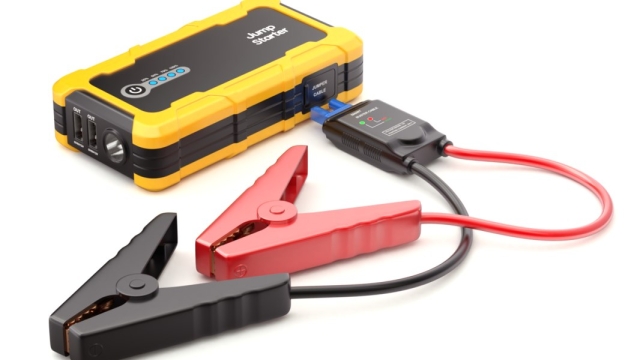Reviving The Road: Mastering the Flat Tire Change
Driving can be a truly liberating experience, but it’s not without its unexpected challenges. One of the most common obstacles on the road is the dreaded flat tire. Whether it’s caused by a puncture or a gradual loss of air pressure, a flat tire can quickly sap the joy out of any journey. But fear not, because mastering the art of the flat tire change can empower you to regain control and get back on the road in no time.
In times of a flat tire, having the necessary skills and tools to handle the situation can make all the difference. That’s where we come in. At Rick’s Emergency Roadside Assistance, we understand that a flat tire can happen anytime, anywhere. That’s why we’ve curated this guide to help you navigate the challenges of changing a flat tire efficiently and safely. From the steps of a proper tire change to essential safety tips, we’ve got you covered. So, let’s dive in and ensure you have the knowledge to overcome those unexpected bumps in the road with confidence and ease.
Mastering the Flat Tire Change
Changing a flat tire is a fundamental skill that every driver should master. It can be a frustrating experience, especially if you’re unprepared or unsure of what to do. However, with the right knowledge and a few essential tools, you’ll be able to confidently handle this common road mishap.
The first step in mastering the flat tire change is ensuring your safety and the safety of others around you. When you realize you have a flat tire, find a safe spot to pull over, away from traffic if possible. Turn on your hazard lights to alert other drivers of your situation.
Once you’ve found a safe location, gather the necessary equipment to change your tire. You’ll need a jack, lug wrench, spare tire, and your vehicle’s manual. It’s important to familiarize yourself with these tools beforehand, as each car’s setup may vary slightly.
Now that you’re prepared, it’s time to begin the tire change process. Start by loosening the lug nuts, but don’t remove them completely just yet. This is easier to do while the weight of the vehicle is still on the tire. Once loosened, use the jack to elevate your car until the flat tire is off the ground. With the vehicle securely lifted, fully unscrew the lug nuts and carefully remove the flat tire.
Remember, practice makes perfect when it comes to changing a flat tire. By becoming familiar with the process and staying calm under pressure, you’ll be able to handle this inconvenience with ease. In cases where you’re unsure or unable to change the tire yourself, consider reaching out to a reliable roadside assistance service like "Rick’s Emergency Roadside Assistance" for prompt and professional support.
Stay tuned for the next sections of this article, where we’ll cover other essential roadside skills such as car jump-starts, car lockouts, and towing. By expanding your knowledge in these areas, you’ll be better equipped to handle unexpected situations on the road.
Car Jump Starts Made Easy
In the unfortunate event of a dead car battery, a car jump start can come to your rescue. With just a few simple steps, you can get your vehicle up and running again. Here’s a quick guide on how to perform a car jump start without any hassle.
Firstly, locate a functioning vehicle with a fully charged battery to assist you. Position both vehicles close enough for the jumper cables to reach the batteries but ensure they are not touching each other. It’s important to turn off the engine of both cars before proceeding.
Next, take the jumper cables and attach one red clamp to the positive terminal of the dead battery. The positive terminal is usually labeled with a plus sign or the letters "POS." Then, connect the other red clamp to the positive terminal of the live battery in the assisting vehicle.
Moving on, it’s time to connect the black clamp to the negative terminal of the assisting vehicle’s battery. This terminal is typically marked with a minus sign or the letters "NEG." Finally, attach the remaining black clamp to an unpainted metal surface on the vehicle with the dead battery. This can be a bolt or bracket but should not be near the battery itself.
Once the cables are securely connected, start the engine of the assisting vehicle and let it run for a few minutes. This will allow the dead battery to recharge. After some time has passed, attempt to start the vehicle with the dead battery. If it starts successfully, carefully remove the jumper cables in the reverse order of how you connected them.
Remember, if you are unsure about performing a car jump start or if there are any additional concerns, it is always best to seek professional assistance. Contacting a reliable roadside service provider like "Rick’s Emergency Roadside Assistance" can provide you with expert guidance and ensure the safety of your car and yourself.
Car Lockouts and How to Handle Them
Getting locked out of your car can be a frustrating experience, but it’s important to stay calm and know how to handle the situation. Here are some tips to help you deal with car lockouts:
-
Stay Prepared: It’s always a good idea to have a spare key for your car. Keep it in a safe place that is easily accessible, such as your wallet or purse. You can also consider giving a spare key to a trusted family member or friend who can assist you in case of a lockout.
-
Contact a Professional: If you find yourself locked out of your car and don’t have a spare key, the best course of action is to contact a professional locksmith or roadside assistance service like "Rick’s Emergency Roadside Assistance." They have the expertise and tools necessary to safely unlock your car without causing any damage.
-
Avoid DIY Methods: While it may be tempting to try to unlock your car yourself using improvised methods like a coat hanger or a slim jim, these techniques can cause more harm than good. Modern cars come with advanced security systems, and trying to tamper with the lock can result in costly repairs or even permanent damage.
Remember, a car lockout can happen to anyone, so it’s essential to stay prepared and know how to handle the situation calmly and safely. By following these tips and reaching out to professionals when needed, you can quickly resolve a car lockout and get back on the road in no time.



